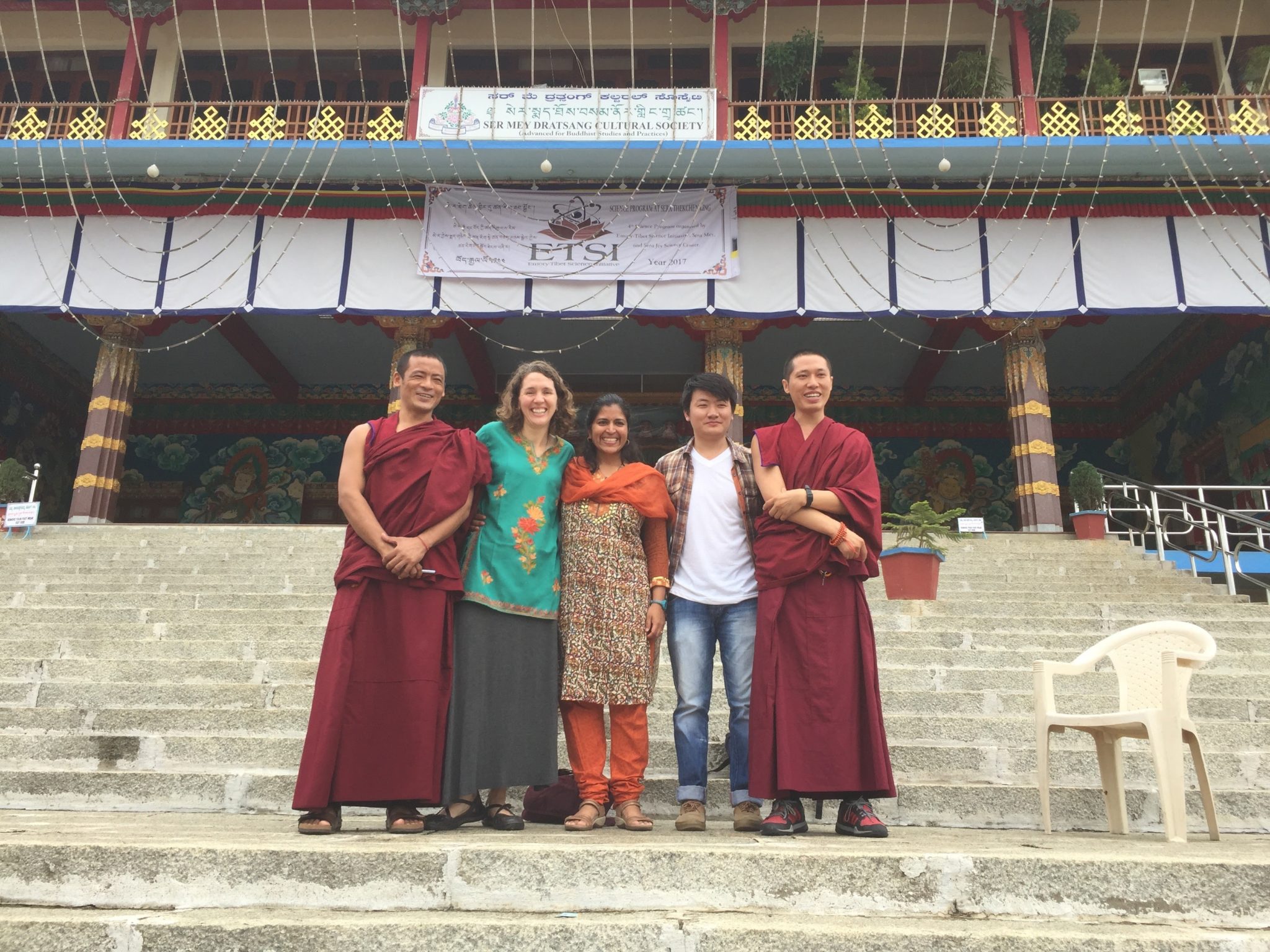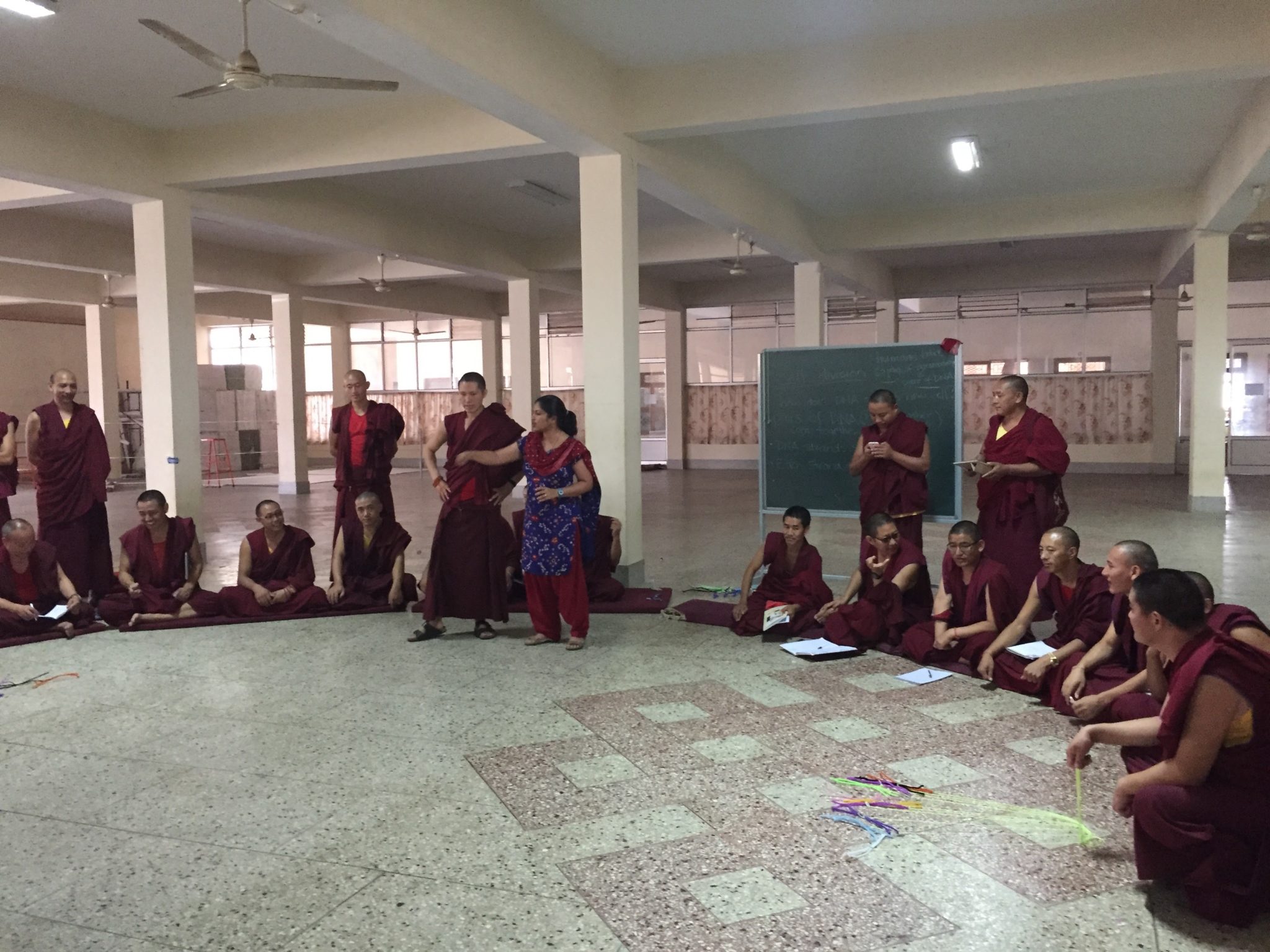 Some of us spent our summers hiking, studying, or working. Colorado State University Associate Professor of Biology Meena Balgopal spent part of hers teaching biology to Buddhist monks in India.
Some of us spent our summers hiking, studying, or working. Colorado State University Associate Professor of Biology Meena Balgopal spent part of hers teaching biology to Buddhist monks in India.
With support from the Emory-Tibet Science Initiative (ETSI), a program sponsored by Emory University and Tibetan spiritual leader the Dalai Lama, Balgopal taught first-year biology to 105 Buddhist monks. The course lasted for 10 days in June and was located at a monastery in Bylakuppe, a Tibetan community in southern India.
She co-taught with Nicole Gerardo, an associate professor of biology at Emory University, who also helped Balgopal conduct research on how the monks think about the concept of life. During her time working with the monks, Balgopal found that she was learning just as much as she was teaching. The experience ultimately made her consider ways to change her approach to teaching at CSU.
“I went there thinking that I was going to go and teach and do research,” Balgopal said. “And I was really challenged by some of my own perceptions and biases about how I teach.”
 Evolutionary karma
Evolutionary karma
Balgopal and Gerardo taught for eight hours every day, then conduced their research in the evenings. For this research project, they asked the monks to journal about what they already knew on a topic and what they had learned from that day’s lesson. Then Balgopal asked them to write about any conflict between the prior and the new knowledge – and how the monks had resolved the conflict or blended the ideas.
For example, after a lesson on phenotypes, or how genes are expressed in an organism, the monks argued that the Buddhist concepts of karma and reincarnation should be blended with evolution and genetics. They said they could test it by studying identical twin babies. If one twin cried more than the other, the monks said this would mean that the twin was bringing anger from a previous life. Their desire to engage in scientific debate surprised Balgopal, who was not used to students using discourse to learn.
She plans to incorporate these ideas into the undergraduate classes she teaches at CSU. For example, she might invite colleagues to model discussions in a large lecture class or assign multiple readings that present different arguments. She said she wants to give her students a foundation for engaging in scientific discourse in the same way that scientists test ideas through debate.
“This is not just problem solving,” Balgopal said. “This is about really challenging each other and saying, ‘Why do we know this?’”
Worldly science
The ETSI program started in 2006, when the Dalai Lama reached out to Emory University to create a system of modern science education in Buddhist monasteries. In addition to biology, the monks study philosophy of science, physics, and neuroscience. The program is part of an effort by the Dalai Lama to supplement monks’ 30-year education and will lead to the monks teaching science courses themselves.
Balgopal will return to India this December to teach research methods and to meet the Dalai Lama for the opening of a new science center at one of the monasteries. She also plans to return next summer to teach introductory biology again and is excited to see what research questions the monks generate. For example, she would love to see them conduct the study about karma and identical twins. There would be just one problem:
“I don’t know where they’re going to get all these twins,” she said.
Balgopal is also looking forward to building on her prior knowledge of how the monks think about science. And she hopes to learn even more lessons to evolve her own teaching at CSU.
